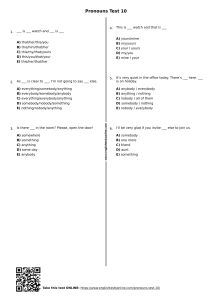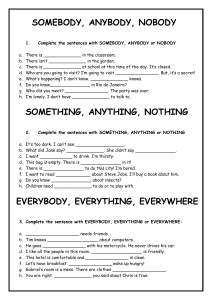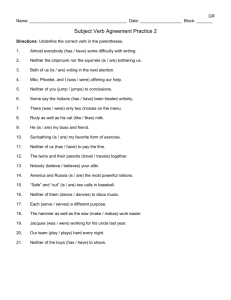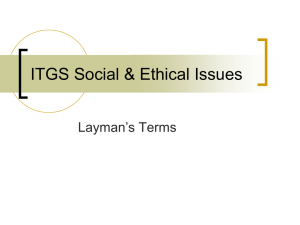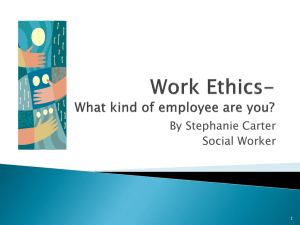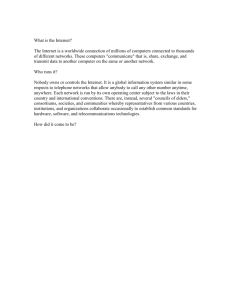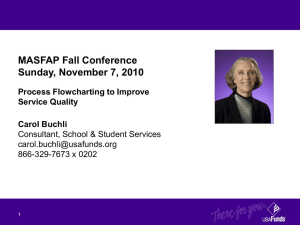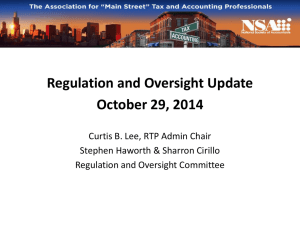Group Dynamics 101 - University of Delaware
advertisement
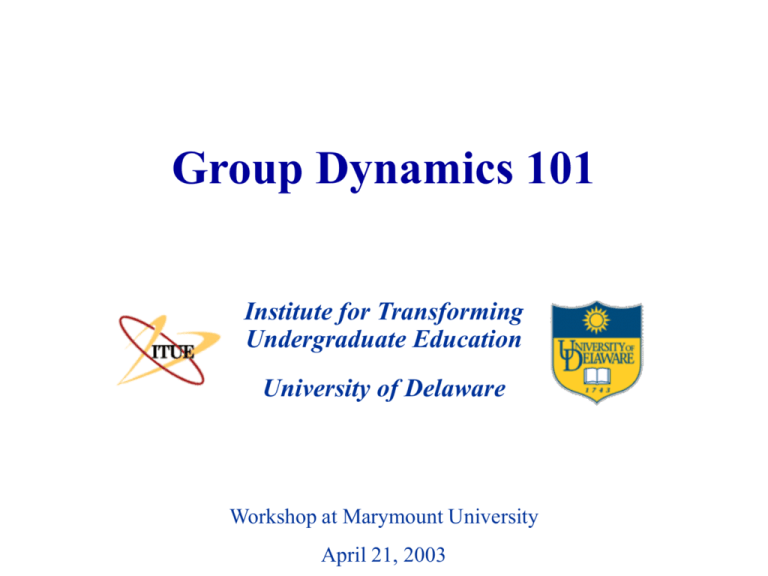
Group Dynamics 101 Institute for Transforming Undergraduate Education University of Delaware Workshop at Marymount University April 21, 2003 Session Objective To explore and discuss strategies an instructor can use to maintain functional groups in the classroom Not searching for peas in a pod Collaborative Learning Informal Formal Short term Impermanent Ad hoc Longer activities Permanent groups Instructor assigned Examples: Examples: Think-Pair-Share Minute papers Concept testing Jigsaw groups Presentations, debates Problem-, project-based learning The principal idea behind PBL is? A. PBL challenges students to learn to learn. B. Learning is initiated by a problem. C. Students work in permanent groups. Think/ pair/ share “The principal idea behind PBL is that the starting point for learning should be a problem, a query, or a puzzle that the learner wishes to solve.” Boud (1985) Five Elements of Cooperative Learning Positive interdependence Individual accountability Promotive interaction (face-to-face) Use of teamwork skills Group processing Johnson, Johnson & Smith. “Maximizing Instruction Through Cooperative Learning.” AAHE Prism. Feb. 1998 Why Use Groups? Committed to it based on research and observation.* Simulates the “real world” - use of teams. High motivation when actively involved. Learn more fully and with less effort. Learn in context. *Springer, Stanne, & Donovan. 1999. Review of Educational Research 69:21-52. The Top 5 Ways to Wreck a Group List 5 behaviors or actions that can undermine good group function Report out in 5 minutes Dawn’s Eight O’Clock Questions to consider: What if anything is wrong with this group? What could be done to help this group work better? Could this situation have been prevented? Videotape Credits Author: “Dawn’s Eight O’Clock” – Harold White Director: Nancy King Producers: Deborah Allen and Harold White Student Actors: Melissa Reddish, Michelle Lyons, Eric Moskal, Crystal Mack, Amanda Simons Suggestions for Using Groups Set the stage early. Form heterogeneous groups. Use permanent groups. Rotate roles of responsibility. Rely on group-selected ground rules. Conduct peer evaluations. Suggestions for Getting Started Explain why learning in groups is a good strategy. Ask students to report on past experiences. Talk about support mechanisms. Use group warm-up activities. Forming Groups Homogeneous vs. Heterogeneous “Homogeneous” Groups Your Class “Heterogeneous” Groups Courtesy of Hal White What Aspects of Heterogeneity are Important for You? Forming Groups Randomly heterogeneous “counting off” : - from roster - in class Intentionally heterogeneous, based on information: - from student records - supplied by students Forming Heterogeneous Groups Without Prior Information • • • • If you are in Math, Phys. Sci, or Engineering, add 25 If you are in Biological or Health Sciences add 50 If you are in Business or Economics, add 75 If you are in Humanities, Soc. Sci. or Educ., add 100 25 - • If you are Male, add 100 • If you are Female, add 200 100 - • Sum the digits of your Social Security Number • Sum the seven digits of your office Phone Number • GRAND TOTAL (Your Number) 26 28 179 When you have calculated Your Number, line up in numerical order. Rotating Roles Discussion Leader Keeps group on track; maintains full participation Recorder Records assignments, strategies, unresolved issues, data; convenes group outside of class Reporter Reports out during whole class discussion; writes up final draft of assignments Accuracy Coach Checks group understanding; finds resources Examples of Ground Rules Come to class on time every day Come to class having done the assignment and prepared to discuss it Must notify members of the group ahead of time if must miss class for any reason Be willing to share information Respect the views, values, and ideas of other members of the group If members of the group violate these ground rules, other members of the group may impose the following consequences: Peer Evaluation Some general suggestions: Use predetermined written criteria that focus primarily on behaviors. Do at least 2X per semester. Factor results into students’ grades. Summarize results and distribute summaries. Keep the process simple. Incorporate into group assignments. Using Groups in Larger Classes, with Inexperienced Students Use well-defined activities with clearly stated objectives. Bring the class together for discussion and/or clarification at frequent intervals. Plan both group and individual assignments. Look for signs of behaviors that undermine group function. Use peer group facilitators. nce upon a time... A team of students had four members called Everybody, Somebody, Anybody, and Nobody. There was an important job to be done. Everybody was sure that Somebody would do it. Anybody could have done it, but Nobody did it. Somebody got angry about that because it was Everybody’s job. Everybody thought Anybody could do it but Nobody realized that Everybody wouldn’t do it. It ended up that Everybody blamed Somebody when Nobody did what Anybody could have done. - Graham Gibbs, “Learning in Teams” Jigsaw Group Scheme 1 2 1 2 1 1 2 2 3 4 3 4 1 1 2 2 1 2 1 2 3 3 4 4 3 4 3 4 3 3 4 4 4 home groups, with 4 members each Rejoin home groups 4 new expert groups, with one representative from each home group (Aronson et al. 1978. The Jigsaw Classroom. Beverly Hills, CA: Sage.)


